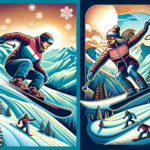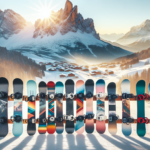Are you a fan of shredding the slopes and catching big air? If so, your mode of motion is likely the snowboard, a winter sports staple. It’s almost impossible to imagine now, but there was indeed a time when snowboards didn’t exist, and skiing was the only way to make your way down a snowy mountain. If you’ve ever wondered about the origins of your favorite frosty pastime, you’re in the right place. This article sheds light on the intriguing history of the snowboard, from its inception to its rise in global popularity. So, buckle up for an exhilarating ride down memory lane in “When Was The Snowboard Invented?”

Early Forms of Snowboarding
You might be surprised to learn that snowboarding or, at least the concept, has been around longer than most think. It has roots that can be traced back centuries, pulling from various cultures and regions around the world.
Emergence of snow surfing
One of the early precursors to modern snowboarding was snow surfing, which began in snowy areas of Japan and was practiced primarily by farmers. Using a single, loose wooden plank, these farmers would descend from hilltops in a manner similar to today’s snowboarders.
Ancient wooden sleds
In addition to snow surfing, ancient wooden sleds played a role in the creation of snowboarding. Originating in Northern Europe, these sleds allowed individuals to traverse snowy landscapes quickly and efficiently, and over time, evolved into a recreational activity.
Evolution of snow toys
As these sleds grew in popularity, they began to be seen less as tools for survival and more as toys for enjoyment. This led to an evolution of design, shifting from a focus on practicality to maneuverability and speed, laying the groundwork for the development of the snowboard.
Introduction of Modern Snowboarding
Modern snowboarding as we know it today took shape in the 20th century, with several key figures contributing to its development.
Development of the ‘Snurfer’
The most significant early innovation was the creation of the ‘Snurfer’ by Sherman Poppen in 1965. Inspired by seeing his daughter slide down a hill on a sled, Poppen designed a stand-up sled, or “snurfboard”. The Snurfer paved the way for the modern snowboard by introducing the concept of riding a board down a snow-covered slope standing up.
Jake Burton’s contribution
Jake Burton Carpenter, a die-hard Snurfer, revolutionized snowboarding by making significant modifications to the Snurfer design. In 1977, Carpenter started to produce a more efficient model than the Snurfer, incorporating a binding system into the design. These modifications have largely shaped the model of snowboards used today.
Dimitrije Milovich and his ‘Winterstick’
Around the same time as Jake Burton, Dimitrije Milovich also had a significant impact by introducing the ‘Winterstick’. The Winterstick was influenced heavily by surfing and had a wider nose and a narrower tail. It was one of the first snowboards to gain commercial success and acceptance within the winter sports community.
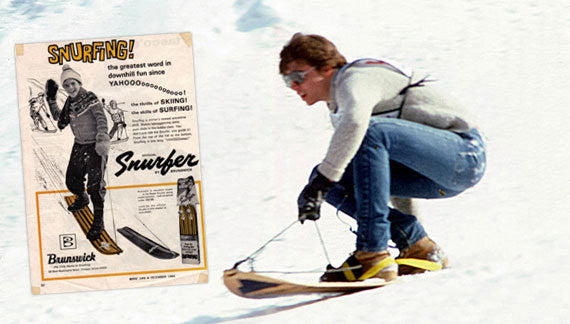
The Snurfer’s Impact
Though it may seem primitive by today’s standards, the Snurfer was groundbreaking in its time and paved the way for the development of contemporary snowboarding.
Popularity amongst hobbyists
The Snurfer caught on quickly with hobbyists, becoming a popular pastime in the winter months. Many of these early adopters were surfers or skateboarders who saw the potential for similar tricks and styles on snow-covered hills.
Transforming winter sports
Beyond serving as a recreational activity, the Snurfer transformed winter sports as it began to gain recognition as a legitimate sport. It brought a new level of excitement and variety to winter sports, particularly in areas where traditional skiing was not feasible.
Influence on future snowboard designs
Even in its simplicity, the Snurfer influenced many future snowboard designs. It was the foundation that future innovators, such as Jake Burton and Dimitrije Milovich, built upon. The idea of standing up and riding down a snow-covered slope on a single board has remained the core principle around which all advancements in snowboarding have been made.
Evolution of the Snowboard’s Design
Over the years, snowboard design has evolved significantly, leading to an increase in performance and safety.
Incorporation of bindings
One of the first major changes to snowboard design was the incorporation of bindings. By attaching the rider’s boots to the board, bindings increased control and stability. Carpenter was among the pioneers to introduce this feature.
Transition to modern board shapes
The shape of snowboards has also changed over time. They have evolved from the relatively simple ‘Snurfer’ design to a variety of shapes tailored to different styles of riding and conditions. Whether it’s a long, narrow board for carving down groomed slopes or a wider design for floating on powdery snow, today’s snowboards cater to individual rider’s needs.
Materials and construction advancements
Modern snowboards employ a range of materials to optimize performance, durability, and weight. From the layered wooden core to the fiberglass or carbon fiber laminates, and the tough exterior topsheets, today’s snowboards offer a level of performance that could scarcely have been imagined in the Snurfer days.
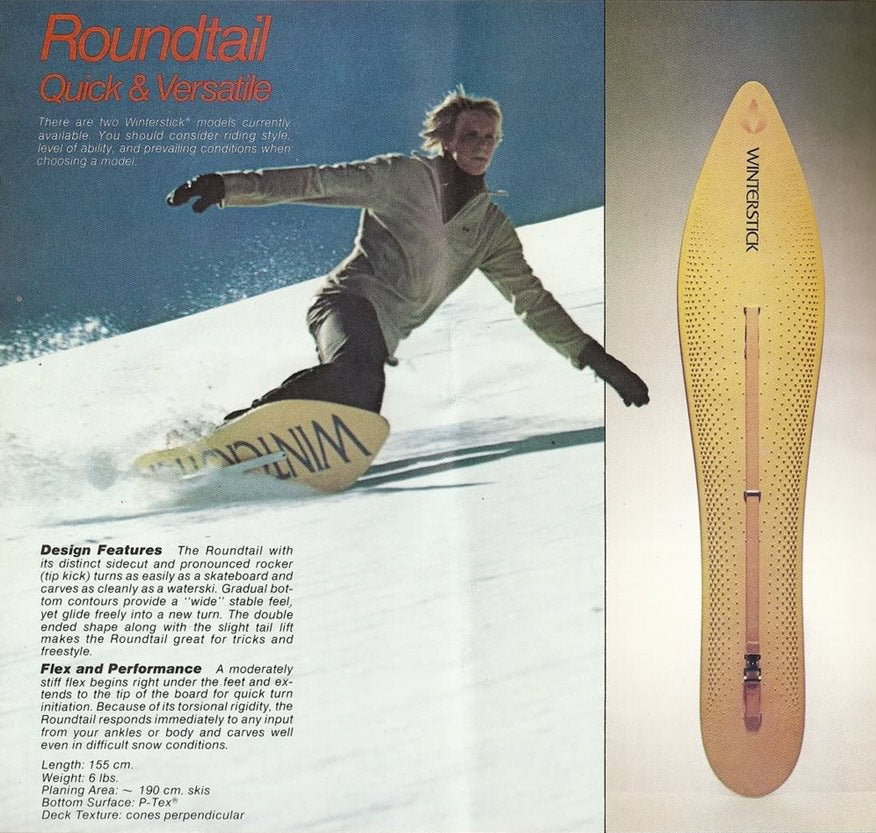
Snowboarding in the Competitive Arena
The journey of snowboarding from backyard hobby to a fully-fledged competitive sport has been a significant part of its story.
Initial backlash and acceptance
Initially, snowboarding faced resistance from the traditional winter sports community. It was seen as a rogue activity, unfit for the slopes shared by skiers. However, as snowboarding’s popularity grew, it became evident that it was here to stay.
First competitive events
The inaugural snowboarding competitions were informal events held by enthusiasts. These events helped driving the sport forward, culminating in the first national snowboarding championship in 1982 in Vermont, organized by Burton Snowboards.
Snowboarding in the Winter Olympics
The ultimate recognition for snowboarding as a sport came in 1998 when it was included in the Winter Olympics in Nagano, Japan. Since then, snowboarding has continued to grow in popularity, with several snowboarding disciplines included in the Olympic slate.
Prominent Snowboarding Figures
Several individuals have had a significant impact on the progression and popularity of snowboarding.
Role of Jake Burton Carpenter
Jake Burton Carpenter is synonymous with snowboarding. His relentless work in advancing snowboarding technology, promoting the sport, and breaking down barriers with ski resorts had a massive part in transforming snowboarding from a fledgling hobby to a mainstream sport.
Contribution of Tom Sims
Tom Sims, a skateboarder and surfer, translated his passion for these sports into snowboarding. He invented various snowboarding equipment and founded Sims Snowboards, one of the first snowboarding companies, significantly contributing to the sport’s growth.
Influence of Shaun White
Shaun White, a professional snowboarder, has brought snowboarding into the mainstream media and public eye. His spectacular feats at the Winter X Games and the Olympics, along with his charismatic personality, have made him a household name and influential figure in snowboarding.
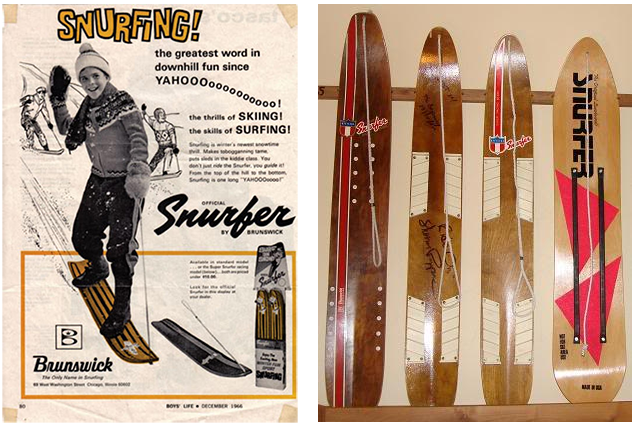
Innovations in Snowboarding Equipment
Along with the snowboards themselves, other snowboarding equipment has also developed significantly over the past few decades.
Development of snowboard boots
Originally, snowboarders would use any boot that could bind to the board. But the realization that snowboarding required unique footwear led to the development of specialized snowboarding boots. They are designed with a balance between flexibility for tricks and stiffness for control and response.
Advancements in bindings technology
Binding technology has advanced considerably, with numerous systems developed for ease of use, performance, and safety. Modern bindings ensure a better fit, improved comfort, quicker adjustments, and faster release during falls.
Evolution of snowboarding apparel
Snowboarding has its distinct style when it comes to apparel, combining fashion and function. Snowboarding clothing has evolved to offer better protection against the elements while also promoting individuality and self-expression.
Cultural Impact of Snowboarding
Beyond the slopes, snowboarding has had a significant cultural impact.
Snowboarding films and media
Snowboarding films have played a big role in promoting the sport and its culture. They showcase not only the capabilities of professional riders but also the beauty of the landscapes in which they ride. These films have brought snowboarding to a wider audience.
Influence on popular culture
Snowboarding has also influenced popular culture, particularly in areas like fashion, music, and language. Baggy clothing, beanie hats, and terms like ‘shred’ and ‘pow’ have all crossed over from snowboarding subculture into mainstream culture.
Role in the growth of winter sports tourism
Snowboarding has played a significant role in stimulating winter sports tourism. It has helped diversify the appeal of winter resort destinations, attracting a younger demographic and injecting a new, lively culture.

Snowboarding Safety and Concerns
As with any sport, snowboarding has had its share of safety concerns.
Initial safety criticisms
Initially, due to its nature, snowboarding attracted criticisms regarding safety. High speeds, jumps, and tricks inevitably led to a degree of risk, causing initial apprehension about the sport.
Introduction of safety gear
To address safety concerns, manufacturers introduced safety gear, including helmets, wrist guards, and padded shorts. These items have significantly reduced snowboarding injuries.
Current safety standards and practices
Today, safety in snowboarding is a top priority. From designated areas for beginners, to regulations on snowboarding gear and practices, considerable efforts have been made to minimize risks and ensure the wellbeing of snowboarders.
Future of Snowboarding
As we look to the future, snowboarding continues to evolve and adapt.
Emerging trends
Trends such as split-boarding, backcountry snowboarding, and eco-friendly practices are shaping the future of snowboarding. In addition, a focus on inclusivity and accessibility is becoming increasingly important, opening the sport up to new participants.
Innovations on the horizon
Technological advancements and innovative designs are set to take snowboarding to new levels. Whether it’s advancements in materials that make boards lighter and more responsive, or cutting-edge protective gear, the future looks bright for snowboarding.
Challenges and opportunities
Despite its progress, snowboarding faces challenges like climate change, which threatens the winter landscapes on which the sport depends. However, these challenges also present opportunities. There’s a growing awareness within the snowboarding community to combat these issues, leading to more sustainable practices in manufacturing and resort operations.
Snowboarding is a sport that has continually reinvented itself. From its humble beginnings with wooden boards and sleds to its cutting-edge equipment and international competitions, it has become an integral part of winter sports worldwide. And with continued innovation and passion, its future looks just as exciting.
- What Snowboard Bindings Should I Get? - January 23, 2024
- What Size Screws For Snowboard Bindings? - January 23, 2024
- How To Snowmobile On Water? - January 23, 2024

